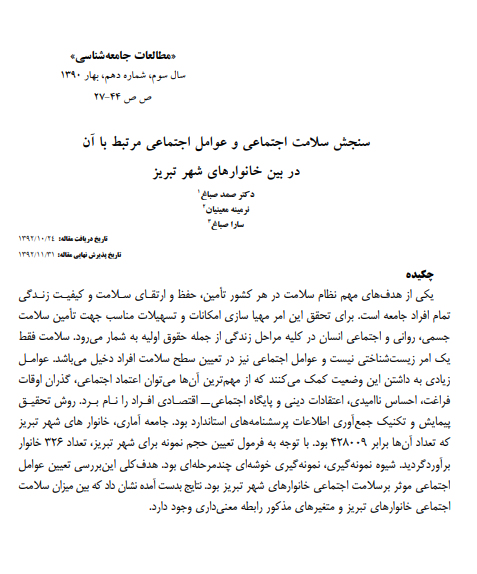New summary of supporting student mental health in higher education published - کرسی یونسکو در سلامت اجتماعی و توسعه ucshd

UNESCO IESALC's latest SDG Brief explores how higher education institutions can increase mental health care among students.
New summary of supporting student mental health in higher education published
13 10 2024 06:41
News Code : 16880976
View Count : 31102
In some countries, up to 50% of higher education students face mental health challenges. For example, around 20% of students suffer from depression, and half of them experience some symptoms. In addition, 15% of students report suicidal thoughts and 2-3% have attempted suicide.
In some countries, up to 50% of higher education students face mental health challenges. For example, around 20% of students suffer from depression, and half of them experience some symptoms. In addition, 15% of students report suicidal thoughts and 2-3% have attempted suicide. This situation is steadily increasing in many countries and has been exacerbated during the COVID-19 pandemic.
In this regard, the growing awareness of mental health has led higher education institutions (HEIs) around the world to recognize that the need for mental health support services on campus is greater than ever. HEIs’ efforts to create a more inclusive and supportive environment for students are part of their broader contribution to Sustainable Development Goal (SDG) 3, which aims to improve physical and mental health and well-being for all.
Key actions that HEIs can take to strengthen student mental health include:
1. Providing free mental health services: Providing free mental health services on campus. Where these services are not available to the public, governments should support higher education institutions with funding.
2. Diversifying the delivery of mental health care: Combining in-person counseling, hotlines, and online counseling to accommodate students’ diverse cultural backgrounds.
3. Providing 24/7 crisis support: Establishing 24/7 helplines to address severe mental health crises, including suicidal thoughts or panic attacks.
4. Integrating mental health care into the broader healthcare system: This can be complemented by mental health screening initiatives and integrating support services into general student affairs offices.
5. Training faculty and staff: Empowering educators and administrators with the skills needed to recognize early signs of distress and guide students to appropriate resources.
6. Implement flexible academic policies: Provide facilities such as extended deadlines, alternative exam arrangements or leave to support students struggling with mental health issues.
7. Raise awareness about mental health: Challenge misconceptions and stigma by launching educational campaigns to increase mental health literacy among students, staff and the general public. These campaigns can be implemented independently or in collaboration with governments and other stakeholders.
The new SDG summary, published by UNESCO IESALC and launched on World Mental Health Day, provides valuable insights into these challenges, good practices from around the world and practical recommendations for HEIs and policymakers. For more information on how universities and governments can support student mental health, check out the full SDG summary: Supporting the mental health and well-being of students in higher education.
Source: iesalc.unesco






